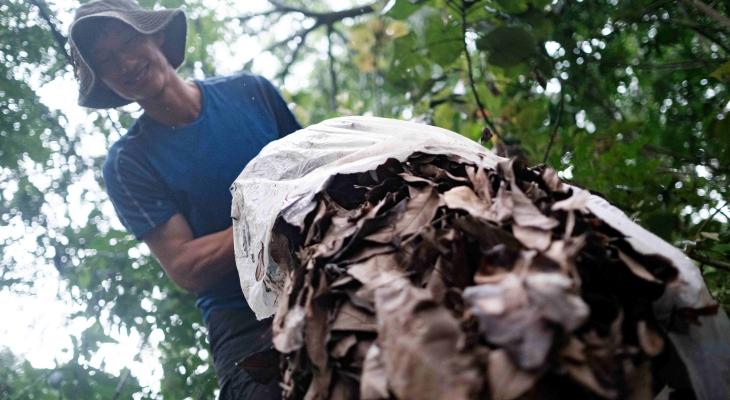A Bamboo Revolution For A Sustainable Future by Farizan D’avezac De Moran
Farizan D’avezac De Moran, an engineer by trade and sustainable environmentalist at heart, serves on the board of the Singapore Green Building Council and is the vice president for the Singapore Institute of Building Limited. She shares her thoughts on why a sustainable revolution in the construction industry is critical, and how the efforts in Singapore and in India, with Bamboo House India, are vital to creating a better planet for everyone.
I remember it was in 2009 when I began my journey in the sustainable construction industry. At the time, sustainability wasn’t a priority — often limited to solar panels, LED lights, or just greenery. This concerned me because the construction industry contributes around 40 per cent of global emissions. With limited understanding within the industry and a preference for traditional building materials, meaningful sustainable progress seemed out of reach.
The construction industry is vital for urban growth, but at what cost? If we continue on this path, we will exploit more natural resources and generate more greenhouse gases, worsening climate change. This is not the betterment of life we aspire to.
We must do better. While policies and regulations help, real change must come from within. We need to prioritise sustainable practices by making informed material choices and reducing embodied carbon to lessen our environmental impact. Shifting from short-term profits to long-term sustainability is key to protecting our planet.
Thankfully, the industry’s understanding of sustainability has begun to evolve. More developers are now exploring alternative building methods and embracing circular economy principles to minimise resource use and create a more sustainable future. Singapore is playing its part in charting the path towards that vision.
The first Green Building Masterplan for Singapore was launched by the Building and Construction Authority (BCA) in 2006 before a new version was co-created in 2021 with the Singapore Green Building Council to encourage developers to embed sustainability into their projects and adapt their energy consumption behaviour. Together with the Singapore Green Plan 2030, the goal is to green 80 per cent of our buildings by 2030, transform new developments into Super Low Energy buildings, and significantly improve energy efficiency, creating a healthier built environment for all.
Today, Singapore’s urban landscape reflects this shift. The first timber building was launched in 2017, and others soon followed. We now have timber structures such as the Singapore Sustainability Academy, SMU Connexion, Bukit Canberra, as well as Gaia @ NTU—the largest wooden building in Asia when it opened in 2023. These are hallmarks of Singapore’s commitment to sustainability.
One project that is especially dear to me is the DBS Newton Green building. During the planning phase, bamboo was proposed for the project—an extraordinary material with immense value to construction and the environment, as highlighted in Our Better World's Bamboo House India story. I was delighted when my client embraced this innovative approach. I hope more clients will adopt sustainable practices like these, and I also hope to see more initiatives like Bamboo House India and others, like Indonesia’s Green Bali school, emerging across Asia!
Though Singapore and India have distinct building regulations, there are valuable lessons to be learnt from each other. By understanding the market dynamics and acceptance levels in both countries, we can identify opportunities for adaptation and innovation. While the specifics may differ, the overarching goal of creating sustainable, resilient urban environments is universal.
The potential impact of reimagining the construction industry is vast. If we prioritise sustainability, we can create a world where we focus on enhancing existing buildings rather than continually constructing new ones. This approach not only conserves resources but also fosters a deeper appreciation for our built environment.
Ultimately, I hope we can come together to take real actions that tackle climate change. It’s time to prioritise sustainability over economic gains. By embracing innovative practices and forging partnerships across borders, we can redefine the construction industry and pave the way for a healthier planet. The journey may be challenging, but the rewards—a liveable, sustainable future—are worth every effort.
About Hand in Hand India (HiH India)
Hand in Hand India (HiH India) is a pan-Indian non-profit organisation set up in 2002 that promotes sustainable development. HiH India works to empower women, educate children, create healthcare access, combat climate change and create jobs. Their award-winning “Recycle for Life” model of solid waste management has been initiated in eleven districts across seven states in India.
Contributors
Director
Shatabdi Chakrabarti
Sound
Charles S
Editor
Particle Studios
Executive Producer
Producer & Writer
Camera
Vasanth Saravanan & Joseph Bala







